The Akito Desert jacket and pants are priced to sell, no doubt about it.
But while it may seem like there’s a lot here for the money, we have some serious reservations about the quality of the stitching, materials and construction.
So is it possible to spend less on an entire outfit than most other brands charge for a jacket alone…and still get the protection you need?
Apparently not.
I have to say, this is one of the most difficult motorcycle clothing reviews I’ve done for webBikeWorld.
That’s because I have very mixed feelings about the Akito Desert outfit.
On one hand, it’s a real bargain, with a street price of around $170.00 for the jacket and $135.00 for the pants.
But on the other hand, the term “you get what you pay for” has never been more appropriate.
And that is apparent by looking at some of the materials and construction in the outfit — especially the pants, which have unacceptable levels of quality.
So how low is low? The Akito Desert jacket can be found for as little as $169.95 here . Both links show the selection of Akito Desert jacket and pants colors and sizes at the webBikeWorld.com Amazon affiliate.
Low prices are great and everyone wants a bargain — getting more for less — right? But there’s one topic that has been discussed many times in the various webBikeWorld.com clothing reviews, and that is, it’s impossible to tell whether or not a cheap jacket will protect you as well as an expensive jacket when the time comes.
The “Racer Rule” applies here, as we’ve mentioned before. That is, if a motorcycle racer wears it, you can pretty much count that as an endorsement of its safety. Otherwise, there’s not much to go on. You can read what we have to say in our clothing reviews about Kevlar, CE-approved armor, SuperFabric, Keprotec and the rest of the stuff that’s supposed to protect you when it matters most.
Some day — maybe — all motorcycle clothing will undergo CE-standard (or other) safety testing and it will be labeled and rated, like the Clover Tekno jacket (report). But I can guarantee you won’t be paying $169.95 for it. In the meantime, you save your money and take the chance. It’s a gamble — as are many other things in life…
Of course, there’s always the “cheaper is better” crowd — low price at all costs. I am not a member of that persuasion. I’d much rather spend good money on high quality and buy it once and have it last for many years. I also enjoy owning and wearing quality products that I can believe in.
Honestly, I don’t get that feeling from this outfit, but I’m sure there are others (like the penny-pinching motorcycle owner who converted a coal shovel into a crash guard) who will disagree
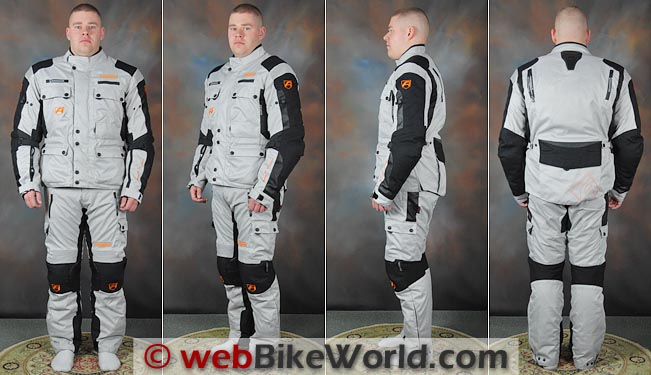
Akito Desert Jacket and Pants Overall Quality
The Akito Desert jacket and pants are nicely styled. Available in a mix-or-match tan or dark gray (“Sand” or “Anthracite”), the jacket has that adventure-touring, dual-sport look that’s so popular lately.
There’s nothing missing from the features list either. From the (claimed) 600 denier shell material to the vents, the “waterproof” zippers, even the (claimed) Knox CE-approved armor in the shoulders and elbows and “windproof and breathable” liners, all the boxes are checked.
The problems begin when you start looking more closely at how that features list was implemented in the reality of the apparel. Yes, the jacket looks the part and the list of features and acronyms is as long as those used by the big name-brands charging hundreds more.
But something has to give at this price, right?
The most noticeable problem — and one that is obviously a direct result of the low price — is the quality of the stitching. As soon as we pulled the jacket and pants from the box, we noticed a lot of loose thread ends (more on the pants than on the jacket), but the amount of misaligned stitching and hanging threads is definitely an issue.
Besides the loose ends, the majority of the stitching on the Desert jacket and pants is single row and external.
Construction quality is one of those “hidden” features that may not seem directly obvious and may never cause a problem until you need it to perform. The fabric used in the stitching appears to be basic polyester thread.
Also, the construction of the jacket and pants looks like a simple fitting of panels together, using the single-row external stitching (i.e., not hidden and no complex hidden seams). This method is cheaper to produce but it provides less security, because the threads may rip on impact and the panels can simply burst apart.
Where the stitching is bad on the Desert outfit, it’s really bad. Some of the corners have loose threads hanging out all over (see the Desert pants review for more details). The stitching quality isn’t quite as bad on the jacket as it is on the pants, but be sure to view the slide show in the companion Akito Desert pants review to see some of the close-ups.
This is the big, big difference between the Akito Desert jacket and pants and spending more money on products from Firstgear or Teknic — or a lot more money on quality products from Dainese, Richa or Rev’it. It’s why quality motorcycle clothing costs more.
The Akito Desert outfit also has the dubious distinction of being reviewed right after we ran the excellent high-end Richa Spirit jacket and pants (review) through the webBikeWorld wringer. Granted, the price difference puts these outfits in two different universes, but hang the two jackets next to each other and it’s like they were made on, well, in two different universes. But it becomes immediately apparent by looking at the Richa outfit what you pay for when you buy quality
Knox Armor? Or “Knocks” Armor…
Akito also claims that Knox armor is used in the shoulders and elbows, but the armor in the jacket and the pants does not have the Knox logo or brand embossed on it and as far as I know, all Knox armor is branded.
In fact, at the time of publication, when I click on the Knox link for more information on the Akito website, the armor they show in the photos indeed has the Knox logo and the armor shown does not match the armor that came in our jacket.
I may be way off base here because I have no way of knowing for sure. The only thing we can do is to compare what we’re seeing here to the Knox protectors and YKK zippers we’ve seen in other name-brand motorcycle gear.
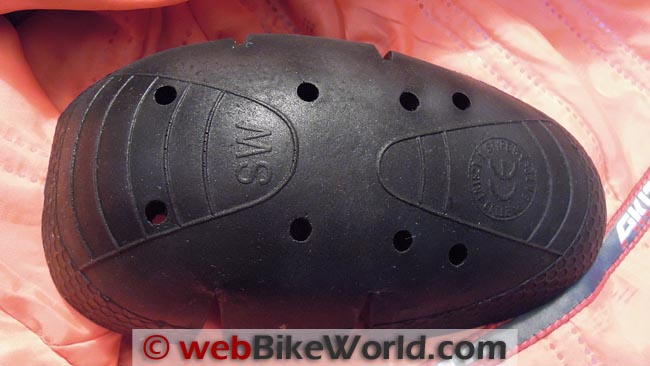
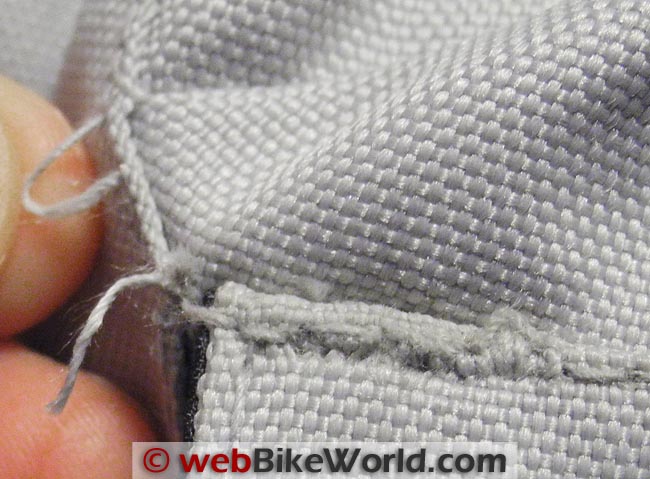
Note that I’m not accusing anyone of anything — and Akito is under no obligation to prove anything to us. All I can do is report on my subjective opinion.
It would be nice to think that all of those other guys are charging big money just because they can, that you really don’t have to spend $500+ on a jacket because Akito has them all beat. But there is a difference, some of it is objective (the stitching quality and construction) and some of it is subjective.
But does that mean it’s all bad? In the case of the jacket, the answer is no, not really. There’s probably 170 bucks worth of value here, and maybe more.
And there are a lot of motorcyclists who apparently like the Akito Desert outfit, because the rumor is that the company completely sold out the first manufacturing production run in no time at all. The outfit would probably serve for casual or occasional use, but I personally would not count on it for regular use or over the long term.
The jacket (and the pants) perform on the road like, well, like you’d expect in a decent motorcycle jacket and pants outfit. They’ll keep you warm, block the wind and maybe even the water and they’ll probably protect you better than a pair of jeans if you’re in a crash.
Just realize what you’re getting here and manage your expectations and you should be fine.
Akito Desert Jacket Outer Shell Features
The jacket shell material is claimed to be 600 denier polyester, which is a typical spec for a generic motorcycle jacket material. It’s soft and pliable, so no break-in is necessary and the jacket feels comfortable right away.
The styling is modern and it looks good — as long as you don’t get too close to see the stitching. The jacket definitely has the dual-sport vibe, especially in the lighter colored version.
The main entry zipper is non-locking, labeled YKK and it’s covered by an entry flap that secures with hook-and-loop and metal snaps riveted to the material. The snaps have a rubberized cover and they’re labeled “IRC Button” on the inside.
The shell is lined with a very thin orange-colored mesh. The material seems fragile, as it will fray when only my rough fingertip — not even my fingernail — runs over the material. The mesh liner is permanently attached, sewn under taffeta borders along the bottom and placket hems.
The contrasting black material seen in the photos along the waist appears to be of the same type as the jacket shell, just in a different color. A different type of black material covers the elbows and lower arm on the outside and the upper shoulder to act as additional abrasion resistance.
These are bordered by strips of perforated leather. All of these sections are sewn using single rows of external stitching.
The rear of the jacket shell has a rubber appliqué at the top that apparently serves only a decorative purpose. A large pocket is located along the bottom part of the jacket in the rear, which can be used to store the removable liners.
The jacket also has an attachment zipper for the Akito Desert pants.
The collar is padded and has a narrow edging of leather along the top. The collar has a small adjustment range on the hook-and-loop closure at the neck.
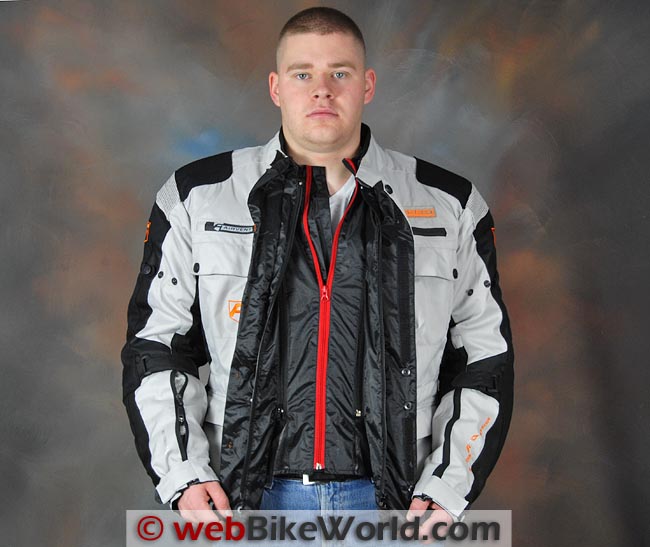
Adjusters
Adjustability is through a thin waist belt on either side that is attached under the fabric in the front of the jacket with elastic. There are three snaps on the side to provide varying degrees of adjustment.
The upper arm has two snaps for adjustment and the lower arm features a hook-and-loop strap and a plastic D-ring on the sleeve, attached with a single row of stitching.
This is another area where the Desert jacket illustrates its low price, because higher-level jackets usually have a large tab that has multiple “X” rows of stitching to hold the adjustment D-ring in this location.
The sleeve cuffs have a simple hook-and-loop tab that allows about 30 mm of adjustment. The sleeve cuffs do not have darts or “V” shaped sections which can help fine-tune the cuff adjustment.
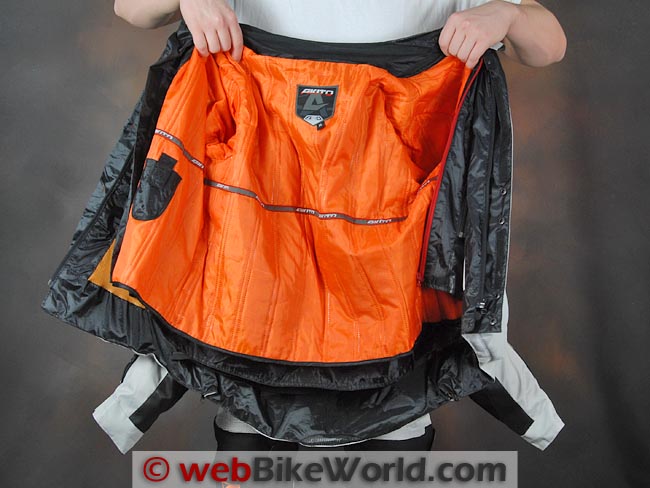
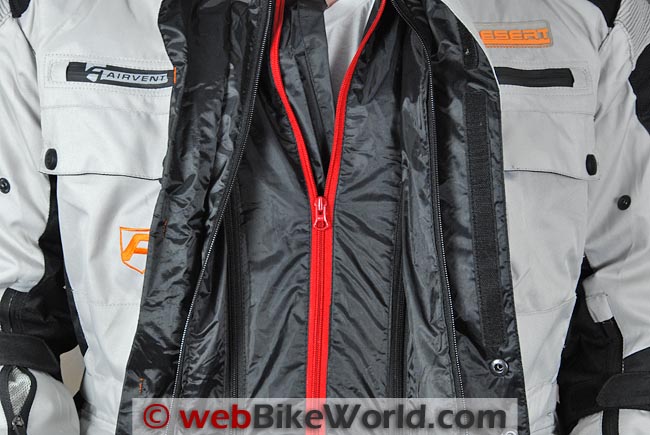
Pockets
The Desert jacket features large cargo pockets at the upper chest, one on each side. These open with a pair of metal snaps on either side of the flap cover and the inside of the pockets is lined with what appears to be a water-resistant material. These pockets measure about 18 cm deep by 14 cm wide (7″ by 5.5″).
The left-hand outside part of the jacket features a cell phone pocket, placed horizontally just below the upper chest pocket and the lower cargo pocket. It opens with a hook-and-loop strip that has a handy rubber grip. This pocket measures 15 cm by 65 cm (5.75″ x 2.75″)
The jacket also has two bottom cargo pockets, one on either side, covered by a flap with two snaps. They are lined with a water-resistant material. These pockets are nearly identical in size to the upper cargo pockets noted above.
There’s a zipper pocket inside the left placket, handy for stowing a wallet. It also has a water-resistant lining and uses a YKK-labeled zipper.
Again, just to note that all of the snaps on the jacket, including the pockets, are covered with a rubberized protector on the outside. However, the snaps are simply riveted through the jacket material, without any backing or reinforcements that we can see, which doesn’t bode well for their longevity.
Jacket Liners
The jacket includes two liners; an “insulating” liner that is really nothing more than an orange-colored thin material with almost no padding or material in between the waffle-like pattern.
This liner has a small patch pocket on the right on the inside for cell phone storage and another, larger patch pocket on the left for general storage. Each of these pockets closes with a strip of hook-and-loop.
A separate windproof, waterproof and breathable (claimed) liner is also included and the liners can be installed individually. Both of these liners zip separately into the jacket shell with zippers branded YKK. The windproof liner has a full-surround zipper along the plackets and neck and it attaches with two snaps at the inside of the sleeve cuff.
The windproof liner is backed by a loose taffeta material and the liner did prevent water from entering the jacket during our trials. The seams on the wind/waterproof liner are joined with a combination of stitching covered by a type of heat sealing. There are no additional pockets in this liner.
Ventilation
Remove the windproof liner and the Akito Desert jacket has quite a bit of air flow just through the weave of the jacket shell material. This is either good (summer) or not too good (winter).
The jacket has two horizontal vents, one on either side at the upper chest, both covered by a rubberized “waterproof” zipper. These are backed by mesh fabric and, when the windproof liner is removed, flow air directly into the jacket, although the vent slits don’t really open wide enough to flow much air.
Curiously, the rubber that covers the vent on the right is labeled “Airvent” but the right-hand vent is not. There are two more rubber-covered vents on the back of the jacket, placed vertically at the “wings” along the upper back. These are also labeled “Airvent”.
The jacket also features two-way locking zippers on either sleeve that can open a large vent that runs from the cuff to the elbow on the outside of the sleeve. The zippers are underneath a semi-water-resistant cover.
Between the air that seeps in through the relatively lightweight textile weave of the jacket shell and the zippered vents, the Akito Desert jacket actually has fairly good ventilation.
On the Road
On the road, the jacket does block some wind and cold, although there is a noticeable amount of air flow when wearing the Akito Desert jacket, which would be more of a benefit in summer than winter.
During our evaluations, we happened to be wearing the Akito Desert jacket at the same time we were evaluating the Richa Spirit jacket (review) and we had the original Rev’it Cayenne jacket (review) on hand also during back-to-back motorcycle timed rides in 42 degree F temperatures on a sunny and dry day. Cotton undershorts and T-shirt were the only layers worn by the rider.
Again, this is not meant as a direct comparison, but it did provide a point of reference. The Akito Desert jacket does a pretty good job of keeping the rider warm and there is no single point of entry for cold air that can be felt, although there is an overall feeling that more cold air “seeps” through the jacket and pants than with the Richa or Rev’it products, which have much thicker insulating liners and Gore-Tex windproof/waterproof liners.
Akito Desert Jacket Sizing
We ordered a Spirit jacket in size XL and pants in size L and both fit pretty close to expected size, although the XL jacket runs a bit small, more like a size large. The combination of the fit and the soft textile used for the outer shell makes for a comfortable riding outfit.
Note that the liners add about 1 size, so you’re probably better off buying the jacket and pants to fit snugly when the liners are installed. It’s better to reduce the amount of air space anyway with the liners inserted for winter riding. Then the jacket and pants should fit more normally when the liners are removed in summer.
Safety, Armor and Protection
The jacket has an internal pocket that is claimed to fit a Knox back protector.
 Conclusion
Conclusion
On the one hand, there’s no getting around the fact that the Akito Desert jacket has an extraordinarily low price. But on the other hand, the quality of the construction and stitching is a real turn-off for me. And since a jacket is primarily designed to protect the motorcycle rider, questionable safety is a real issue.
Honestly, I’d rather spend more and buy from what I consider a name-brand manufacturer.
In my mind, that Firstgear jacket is leagues better than the Akito Desert jacket in every way imaginable and well worth the extra 60 bucks difference.
Akito would be better off spending a little extra time and money and improving the quality, charging a bit more and everyone would still be happy and feel like they’re getting a bargain.
Part II: Akito Desert Pants Review
Owner Comments and Feedback
See details on submitting comments.
From “B.A.” (April 2015): “The Akito Desert jacket is very cheap to buy and the old maxim “you get what you pay for ” applies here.
The main zip broke on mine after the second time I wore it and both the retailer and the main supplier refused to repair it under warranty because I had lost the receipt.
So if you only want a jacket to last you 2 trips then buy this one; if you expect a jacket to last longer then spend the extra and buy a proper jacket from a quality company.”
From “T.L.” (March 2012): “I’ve purchased this same jacket and can attest that it is fitted with KNOX armour in the shoulders and elbows (albeit that the back protector pad seems to be a piece of unidentified neoprene foam).
I’ve also carefully inspected the stitching on my jacket and can find none of the faults described in your article (perhaps Akita has read your article and upped their quality control as a result?!).
Might I request some reviews for clothing that is suited for riding in very warm temperatures and / or in very high humidity. e.g. summer temperatures here (Dubai) are regularly well above 30C / 86F (in the daytime) and, for at least 3-4 months of the year, are in the range of +50C / 122F (in the daytime) down to a mere +40C / 104F (at nighttime) with high humidity thrown in for good measure. Furthermore, it only rains here on about 4 days per year.
That said, when I’m not here in the Middle East, I live and ride in equatorial West Africa, a place where temperatures are an almost constant +30C (day & night) coupled with what most people might describe as an almost oppressive humidity, plus frequent tropical downpours (but at least the rain is warm! ).”
From “L.K.” (February 2012): “I’ve been riding in the Akito gear for almost 3 years now, all year round (except for when there’s snow and/or the temperatures drop below -5 C), and while I do agree they have some quality problems, they are quite durable in the long run. They just don’t look like high-quality gear.
However, the sizing is pretty good, the separate waterproof membrane is something you don’t usually get in this price range, and they do work in a get-off. I had an accident at about 60 mph and the suit has protected me completely – not a scratch, not a bruise.
The pants were destroyed in the process (the Cordura on the knee and on the hip was ground through), but the jacket is still OK and only suffered cosmetic damage.
For this price, I consider them to be excellent value for money, although for cold-weather riding they do require a heated undergarment.
Also, I would like to point out that the “Akito” brand is a cheaper version of the “BF” brand. The gear is probably manufactured in the same plant, BF Desert jacket and pants look almost identical to Akito Desert, but are about 50% to twice as expensive, depending on where you look. The quality of finishing is also much higher. I suspect that Akito is simply a low-price, low quality assurance version of the BF gear.”
From “R.H.” (February 2012): “I have owned the Akito Jacket and Pants for 2 riding seasons. I was initially attracted by the great styling. Although I do own several other “brand name” jackets and pants, the styling caught my eye whilst perusing one of my favourite online buying sites.
Many of the issues you bring up regarding loose threads and poor sewing I have not noticed on my jackets or pants, and I have machine washed both items several times without any issues.
Although areas on my higher quality items do have double sewing where these do not, it has not yet proven to be an issue yet.
I do agree with your assessment regarding warmth. These items are not overly warm on those colder days, and I will often ensure I have my heated vest along should I anticipate cooler temps. Wind does easily penetrate, even with the “quilted” liner in. For known colder weather riding, I wear one of my other outfits.
The built in venting is of minimal value, especially the vents in the pants which are basically useless. Both items are defiantly waterproof, I have worn them for days on end in rain without any real issues. They do dry very quickly once the rain stops as well, I suppose due to the lightness of the material.
I was unfortunate enough to have a meeting with the pavement, traveling at a speed of approx. 35 mph. I know my elbow hit the ground, but I suffered zero injury and there was no damage to the materials….lucky I suppose?
For me, the sizing was spot on, where as I generally have problems with sizing. The pants fit me like a glove and the jacket is just right.
The areas where quality was a real issue are; the zippers are of a poor quality, using a very fine tooth arrangement. The zipper on the pants constantly falls down, and the snap at the waist band constantly comes unsnapped. Fortunately there is also a clasp alongside the zipper.
The waistband adjustment (which I don’t really use as I wear suspenders to keep them up) is an odd arrangement. If you cinch them up, you actually pull the zipper/snap area away from itself….odd.
Comfort wise, these are defiantly the most comfortable jacket/pants I own. The material is not stiff, and the inside is very soft against your skin. I do note that the online retailer I bought them from is no longer carrying them, for whatever reason….
So there you have it. In my opinion these items have been very good value for the money. Perhaps the quality has slid since I bought mine, as reported in your article.”


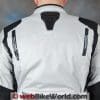
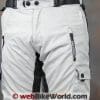


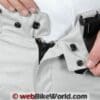
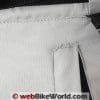
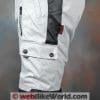
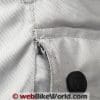
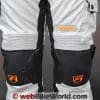
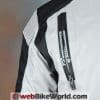
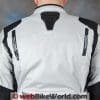
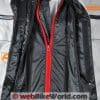

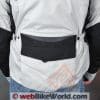
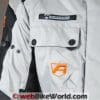


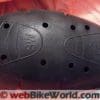
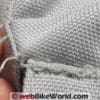
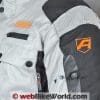
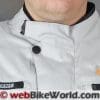
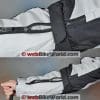
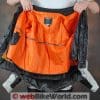

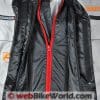
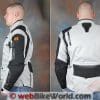
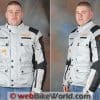
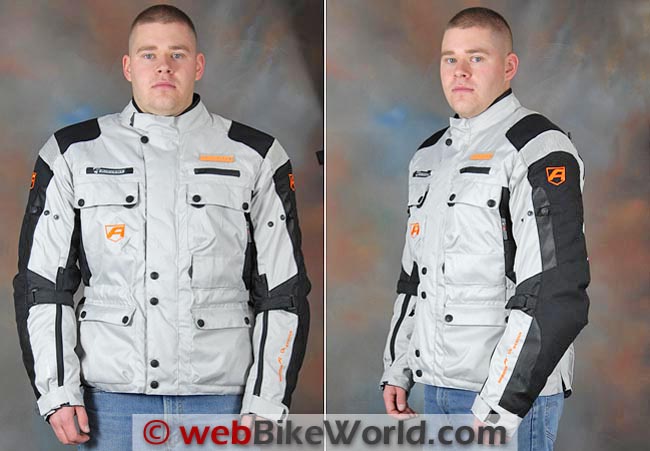
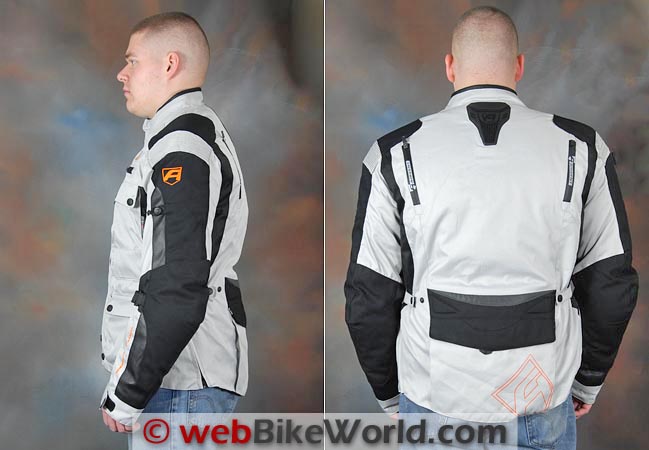
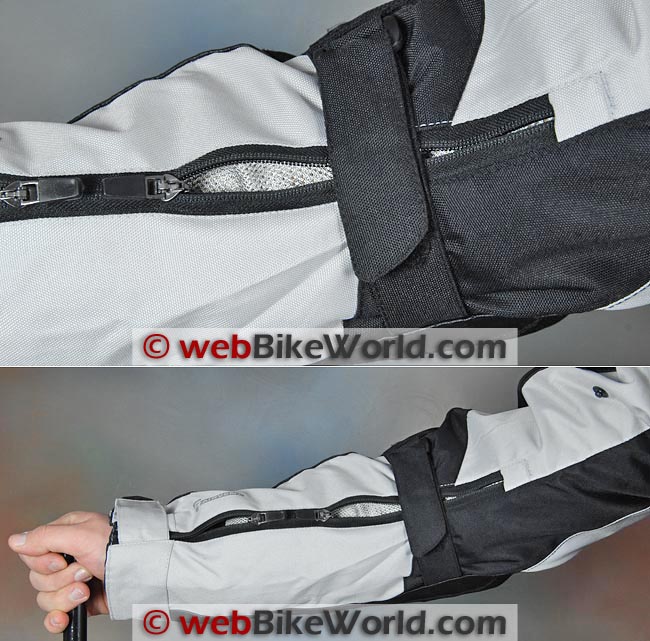
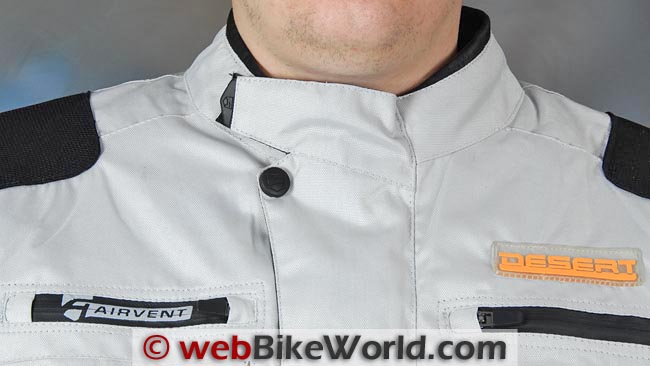
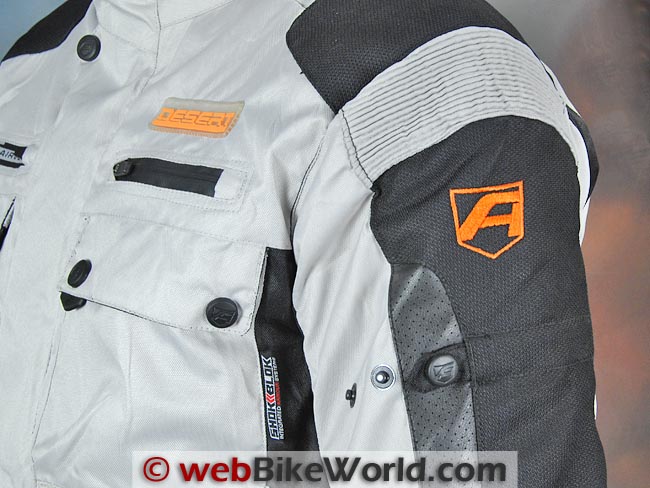
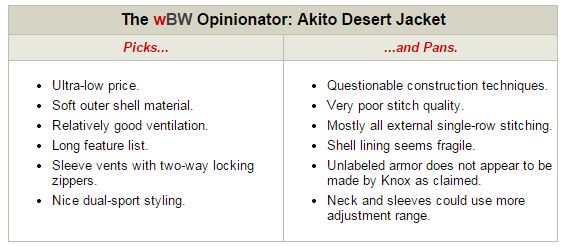 Conclusion
Conclusion